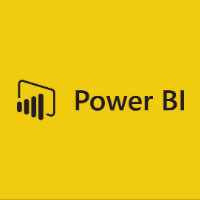Introductory tutorial to Power BI that reviews the basic procedures for loading and editing data, creating visualizations and reports, and sharing them and the dashboards that are designed on them. The DAX data modeling language is also introduced and applied in simple examples for the creation of calculated columns and measures.
Tutorials
Introductory tutorial to the M language used in Power BI for the definition of ETL processes. In this tutorial we will review the basic concepts involved in writing this code: language syntax, data types, function creation...
Introductory Tableau tutorial that will review the basic procedures for connecting and transforming data, creating worksheets, dashboards, and stories, and some of the tools offered by this BI solution. We will also review the Tableau Prep Builder program as an ETL process manager.
Introductory tutorial to the Python programming language -the language most used by data scientists around the world- in which we will review the most important elements of it: data types, operations, functions, control structures...
Introductory tutorial to the Python NumPy library in which we will review the main structure offered by it: the multidimensional array. In addition to seeing the main methods to create this type of structures and the procedures involved in their use -resizing, selection...-, we will review a selection of the functions offered by NumPy -all around the concept of multidimensional array-: mathematical functions, sets functions, linear algebra functions...
Introductory tutorial to the Python pandas library in which we will review the two main structures provided by this library: the series and the dataframe, both based on the versatile multidimensional array of NumPy. pandas, designed on top of NumPy, is a high-level library that offers great functionality for the correct use of the two structures mentioned, and in this tutorial we will review the most important concepts, functions and methods.
Introductory tutorial to the Python matplotlib plotting library. We will begin by reviewing the three basic elements of every graph: the figure, the set of axes and the plot itself, how they are created and customized, we will see the resources we have to format our plots, and we will describe the main 2D and 3D plots that can be generated with this library. We will finish by mentioning the ability of matplotlib to generate maps and plots on them.
Tutorial of the seaborn python library in which we will review the data visualization functions offered, from graphs of univariate and bivariate distributions, to those that model and show simple linear models that allow us to discover trends and patterns in our data very easily. We will review the color palette management tools and how to customize our visualizations.
Introductory Machine Learning tutorial in which we will review the main concepts associated with an algorithm: learning, training, predictions... We will see how algorithms are classified and their main families, performing training and prediction examples with the Scikit-Learn library.

